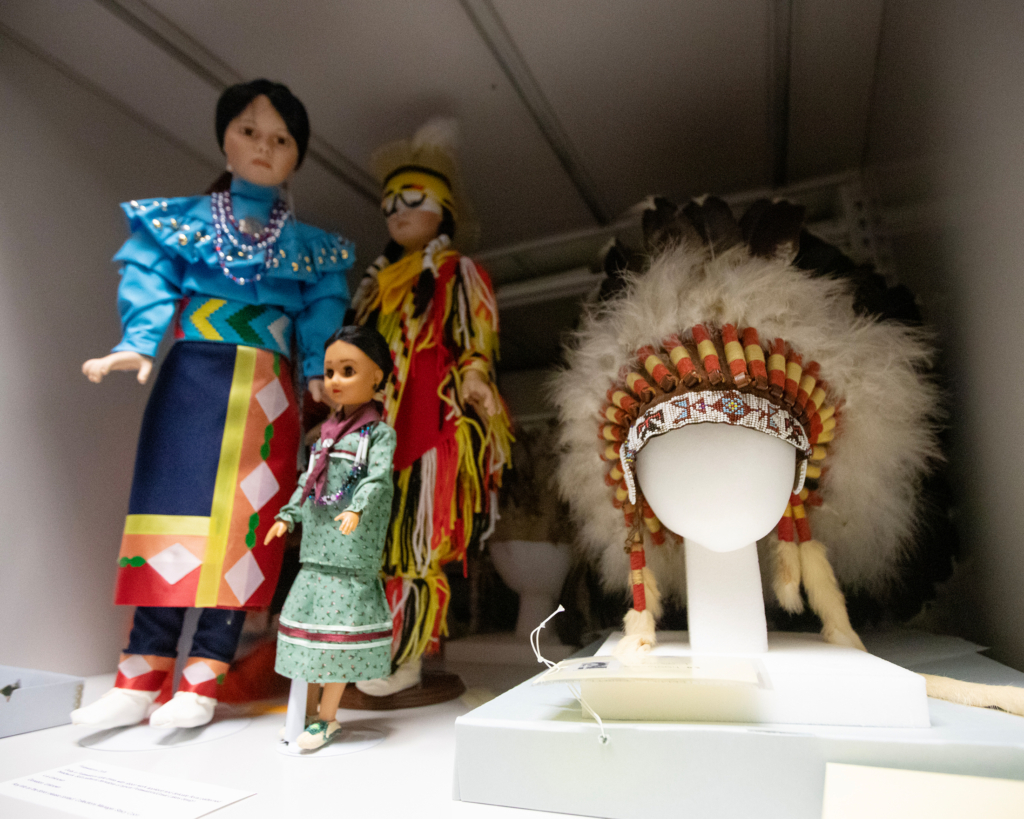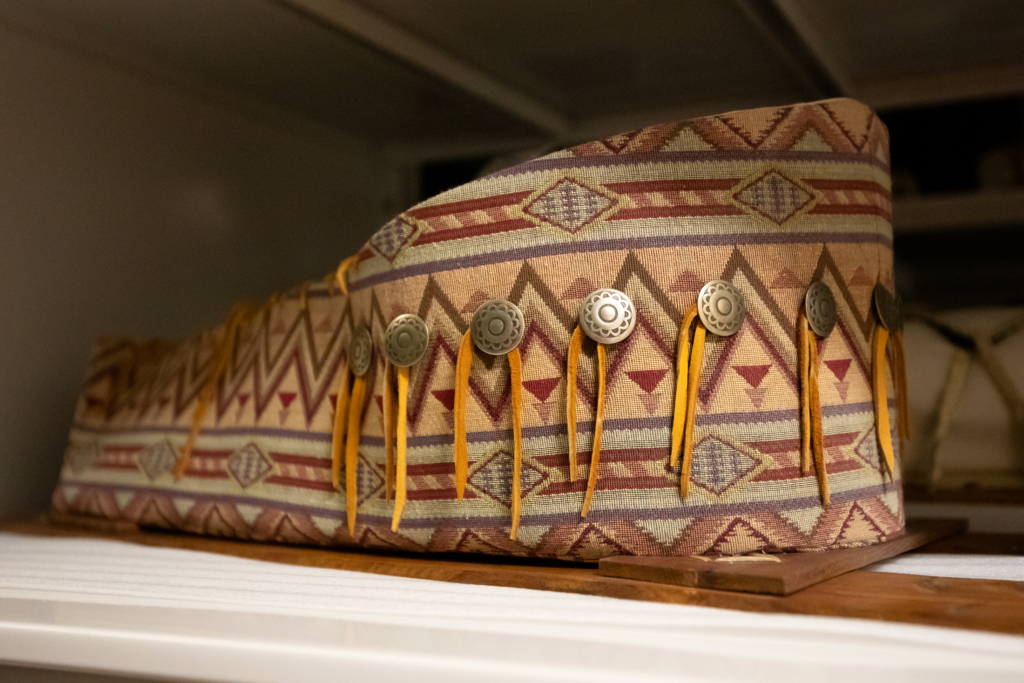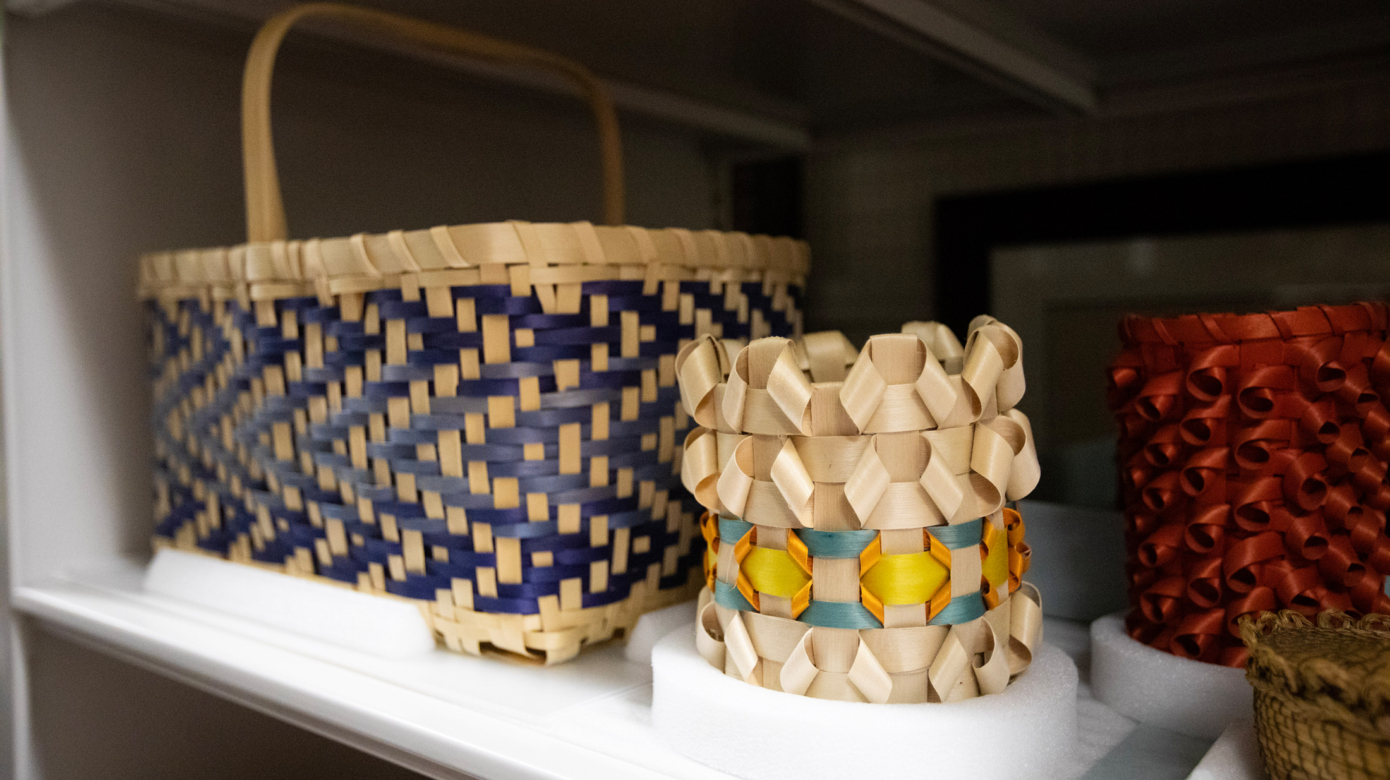With special care, family heirlooms may withstand regular use so the next generation can enjoy them as well, an expert from the Citizen Potawatomi Nation Cultural Heritage Center said.
CHC Collections Manager Peter Kavourgias also noted that incorporating traditional practices with modern preservation techniques helps an item’s longevity.
“Traditional practices, techniques and methods are highly valuable. (We don’t) discount that knowledge, because that knowledge is extremely valid,” he said. “There are additional methods that you can use that we’ve learned as professionals that hopefully can provide everyone an opportunity to preserve their items.”
Pottery, other handmade art
Non-wearable heirlooms, including pottery and paintings, should be carefully stored. Preservation by maintaining a stable environment free from extreme temperature fluctuations is best. Extremely low or dry temperatures can contribute to cracking. Some materials absorb water, so high humidity must be avoided as well.
“For something that is fragile, like pottery or other ceramics, I would suggest a storage container created for ceramics. You can even make one yourself using a YouTube tutorial,” Kavourgias said.
People may not be aware that placing the item on a flat surface may be harmful. Cradling the item in some type of material is best. Everything the item touches should be acid-free.
“Having like a buffer around it, whether it be one of those plastics, like the polyester bags, is helpful. If you were to store it on a shelf, you should have a small cut out of that polyester underneath,” he said.
Sometimes, small nicks or scratches can also lend character to the item and can be left in place. The CHC gallery currently holds an 18th century violin, which is largely un-refurbished due to its historical value.
“A lot of times (imperfection) kind of adds a story to it. We’ve had people want to discuss refinishing a piece that they have from their great-grandpa. But there are stories and generational history that’s associated with it. A lot of times cultural value or personal history is lost when you paint over the scratches,” he said.

Beadwork
The most important aspect of maintaining beadwork and other similar items is preventative care, Kavourgias said. While some deterioration is inevitable, reducing the amount over the item’s life is possible.
Beadwork presents a unique challenge because of the wide variety of materials used to make beads. Glass, shell, stone, metal or plastic may be used. Kavourgias recommends a light cleaning before returning the items to storage. There are gentle cleaning methods for beadwork made from all types of beads.
“You can use a soft bristle brush to brush away dirt, using slow, smooth movements. You can also use dust cloths, like microfiber, very gently. You really want to avoid using anything like dusting feathers and things like that. It can make things worse,” he said.
However, not every piece requires cleaning. Pouches that hold tobacco or other important items should not be cleaned.
“There are specific pieces that you don’t want to (clean), and that’s based on cultural practices. So, you don’t want to take the (residue) off. Because it’s from using tobacco or something like that, you want to keep that there. You’ll just need to be more vigilant in how you monitor and take care of it,” Kavourgias said.
When the items are not in use, safe storage is important. Temperature extremes or large fluctuations in humidity should be avoided. High humidity can encourage the growth of mold or mildew. Extremely low humidity can cause some beads to crack. Storage in an outdoor area, such as a garage, should always be avoided.
“You really want to store it in the best conditions possible, so having it somewhere in the house, which is usually centrally air conditioned and it’s not too extreme, would be good. You don’t want the extreme back and forth,” Kavourgias said.
For safe storage, boxes or plastics that don’t contain harmful chemicals are best. Kavourgias recommends acid-free cardboard, tissue paper and plastics with polyethylene, polypropylene and polyester. Most of these items are available at major retailers.
He said if a beadwork piece becomes damaged, it is best not to attempt the repairs yourself. The staff at the CHC is happy to answer any questions or help locate someone who can repair the damage.
“We can reach out to conservators, and a lot of them specialize in those different areas, like glass or leather or metal. That’s usually the best way to do it,” he said.

Natural items
Kavourgias said items made from natural sources, such as feathers, fur or bone, require different care because of their spiritual importance and the nature of their origin.
Eagle feathers can present a challenge because they are fragile and sometimes permanently attached to regalia. However, it’s important to regularly inspect the feathers for damage or necessary cleaning.
“The most important thing for feathers or any sort of organic material is pest management. When you’re storing any of these things, you want to make sure that it’s in an uncluttered, dust-free environment,” he said.
Feathers should be kept in acid-free cardboard or other containers free from harmful chemicals. Feathers may also be wrapped in material such as linen, muslin or cotton. Polyester or polypropylene bags may be used. Wool should be avoided as it tends to draw pests such as moths.
“Eagle feathers, because they’re keratin based and have that protein still available, they’re really susceptible to insects,” Kavourgias said.
With care, it is possible to gently clean any dust or dirt from an eagle feather.
“You can put the eagle feather on a flat, hard surface and then use a soft bristle brush. You can wear cotton gloves, or with extremely clean hands, and preen those eagle feathers back into shape. And depending on how damaged they are, you might not be able to fix those gaps and things that might exist, which is okay,” he said.
If the feather is attached to another item, it may be possible to remove the feathers and clean the rest of the item. In those instances, Kavourgias recommends taking photos of how the feathers are attached to the regalia so they may be reattached in the same way later.
“It’s also important to be mindful of things that are passed down because you may not be aware of how or why it was made. Sometimes there are specific stories that are mentioned, of parents talking to their kids about something that was passed down from generations, just to be mindful of how it was cared for and made,” he said.
Fabrics
Fabrics used for shirts, skirts or blouses last longer when carefully folded or hung up in a closet. However, special attention should be paid to prevent unnecessary stress on seams, especially in heavier items such as jingle dresses, Kavourgias said.
“Those (heavier items), you can fold them. But we would recommend that those folds be lined with acid-free and buffer tissue paper to avoid heavy creases. With fabric, they all have some degradation the more they’re folded. But having those acid-free and buffered paper tissue lining the folds can save you from future issues. Whenever you have something that is able to be hung, something that isn’t very heavy and doesn’t have a lot of deterioration, we’d recommend padded hangers,” he said.
Wooden hangers, while thought of as sturdy and long-lasting, should be avoided. Kavourgias said wood is probably the worst type of hanger for clothing that has any historical or cultural value because wood can release gas or acid and cause degradation.
Spot cleaning
In the event an item is stained, there are ways to gently clean it without compromising the heirloom’s integrity. For cloth or leather, gentle spot cleaning can remove some dirt or stains.
“We usually use a quart of distilled water with two to three drops of mild dishwashing liquid, like Dawn,” he said. “If it’s ink or something difficult to remove like that, you’d have to consult with a textiles conservator to figure out the best ways to clean it.”
He recommends professional examination for more serious accidents. The curators at the CHC are available to help Tribal members decide if professional assistance is needed.
Deterring pests
Previous generations often relied on mothballs or cedar to deter pests. However, there are better, chemical-free alternatives today.
“Mothballs are just like a huge chemical disaster,” Kavourgias said. “Cedar or tobacco, if it has like a cultural value, it’s hard to argue against that. That’s something you can still use if you feel like it really adds value to how you’re storing it and caring for it.”
He urges caution though, as organic materials like cedar can draw pests. He suggests checking the item frequently to ensure no pests have been in the area.
Kavourgias recommends closely monitoring any home pest traps for best results. These traps, while efficient, can also draw additional pests to the area.
“If you have a pest trap in there and something does get caught, specifically like rats and mice, that’s essentially food for more insects. Some people use kill bait, like poison. Poison is really like the worst thing when you’re trying to preserve anything, because if it dies, then just a swarm of insects come for it,” he said.
Avoiding harsh lighting
It is important to consider whether light might eventually damage an item. Museums often rotate paintings based on how long they have been exposed to artificial light, Karvourgias said. While most people do not have to use these methods, they should consider whether their heirlooms can withstand exposure to sunlight, which contains harmful ultraviolet A rays.
“Light is super harmful to most materials. Any organic materials, textiles, especially paper, store them in either low light or no light,” he said. “If you’re displaying an item, use a well manufactured display case. In your home, keep it somewhere where there isn’t going to be constant (UVA) light on it.”
With proper care, treasured family heirlooms can be preserved, Kavourgias said. Even new items will benefit from proper care so they may be proudly passed to the next generation.
For more information about preserving family heirlooms, contact the staff at the Cultural Heritage Center at 405-878-5830 or visit potawatomiheritage.com.

